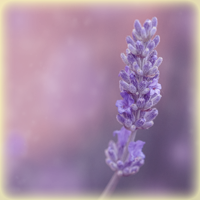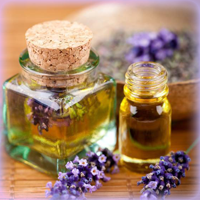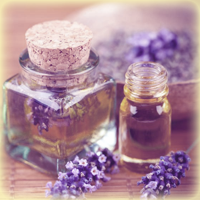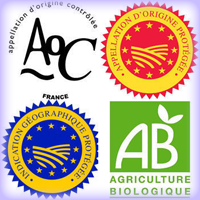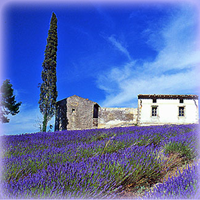Some History

In a pamphlet published around 1925 on therapeutic uses of lavender, R. M. Gatefossé*, wrote:
"Using lavender essential oils for therapeutic purposes is not new. It is likely that this essential oil, under the name Nard Celtique, was highly respected in antiquity and already given great importance for medicinal use as well as a perfume."
Upon the destruction of Celtic power, Romans in the western Mediterranean basin used lavender to treat and preserve clothing and as fragrance for baths.
* René-Maurice Gattefossé, a scientist and industrialist from Lyon who died in 1950, was one of the promoters of lavender cultivation in Haute-Provence.
The word Lavender comes from the Latin “lavare” which means to wash or purify.
Lavander first came to Provence with the arrival of the Romans around 2000 years ago; never leaving and fearing neither drought, wind nor storm, it spread easily to hillsides and plateaus.
At the onset of the Middle Ages, the local Provencal populace gathered wild lavender flowers to treat wounds.
Toward the end of the 19th century inhabitants of Provence began to care for and maintain the wild lavender patches particularly those on hillsides between 600 and 1800 meters in altitude to encourage development of the plant – thence its production.
In this way lavender entered the 20th century: from family to intensive cultivation.
* Source and Photo : "Lavandes Lavandins Parfum d'histoire" by Robert Veyan
One could say that lavender essential oil is a very French essence.
As its cultivation is of interest to an entire poor and mountainous region, it has become a necessary resource.
Alpine peasants safeguarded the very ancient knowledge until about 1900 when talk began of plantations and modern distillery methods.

Source : Les routes de la lavande
Fuelled by a growing demand for Lavender end-uses, notably for medicinal purposes during the war, the price of the essential oil went from 30 francs per kilogram in 1914 to 100 francs in 1918 with an annual production of 100 tons.
Following the war, production had slowed to less than 60 tons per year in 1920 but, tied to lavandin, started increasing in the years following 1925.
Between 1920 et 1960, lavender production greatly contributed to the prosperity of this dry mountain region in southeastern France.
In 1960, over 150 metric tons of essential oils were produced – a record.
Afterwards, production slowed to its 1992 low point due to competition from imports and synthetic products.
However, today this culture is enjoying dynamic new growth once again thanks to the two successive revitalization programs of 1994-1998 and 2000-2005.
* Source : ONIPPAM


